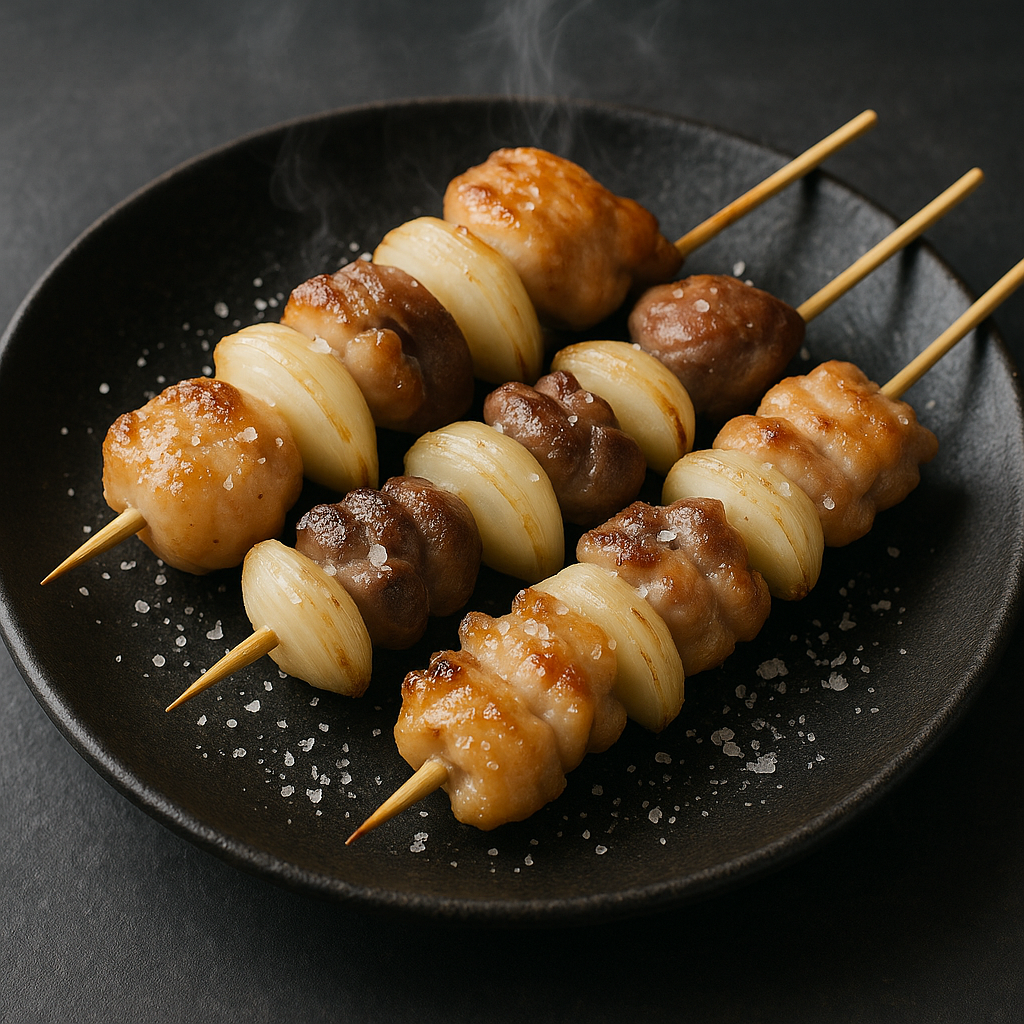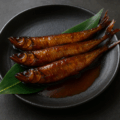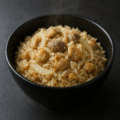室蘭やきとりの特徴
豚肉を使う「やきとり」
室蘭やきとりは北海道室蘭市発祥のご当地グルメで、名前に「やきとり」とありますが、鶏肉ではなく豚肉を使うのが特徴です。
玉ねぎとの組み合わせ
串には豚肉と玉ねぎを交互に刺し、甘辛いタレをつけて焼き上げます。豚肉の旨味と玉ねぎの甘みが絶妙に合わさります。
市民のソウルフード
室蘭市内の居酒屋や家庭で長年愛されており、観光客にも人気のソウルフードとなっています。
室蘭やきとりのレシピ
材料(2〜3人分)
- 豚肩ロース肉 … 300g
- 玉ねぎ … 1個
- 長ネギ … 適量(仕上げ用)
- サラダ油 … 適量
タレ
- 醤油 … 50ml
- みりん … 40ml
- 酒 … 30ml
- 砂糖 … 大さじ1
- 生姜(すりおろし) … 小さじ1
- にんにく(すりおろし) … 小さじ1
作り方
- 豚肩ロースを一口大に切り、玉ねぎはくし切りにする。
- 竹串に豚肉と玉ねぎを交互に刺す。
- タレの材料を鍋でひと煮立ちさせて冷ましておく。
- フライパンまたはグリルで串を焼き、途中でタレを絡めながら香ばしく焼き上げる。
シェフのワンポイントアドバイス
豚肉は肩ロースを使うと柔らかくジューシーに仕上がります。焼くときにタレを何度も重ね塗りすることで照りが出て、本場の味に近づきます。
室蘭やきとりの栄養価(1人分の目安)
- エネルギー:約350〜450 kcal
- たんぱく質:20〜25 g
- 脂質:20〜25 g
- 炭水化物:10〜15 g(タレ由来)
- ビタミンB群(豚肉由来)
- 硫化アリル(玉ねぎ由来、血流改善に寄与)
高たんぱくでビタミンB群が豊富。豚肉と玉ねぎの組み合わせで疲労回復効果が期待できます。
室蘭やきとりの歴史
名前の由来
「やきとり」という名前ながら豚肉を使う理由には諸説あり、戦後の食糧事情で豚肉が手に入りやすかったことが背景といわれています。
室蘭市民のソウルフード
1950年代頃から市内の食堂や居酒屋で広まり、室蘭市民にとって定番の味となりました。
観光グルメとしての普及
現在では「室蘭やきとり」の名で北海道内外に広まり、イベントや観光名物としても人気を集めています。
English Version
Features of Muroran Yakitori
“Yakitori” Made with Pork
Muroran Yakitori is a local specialty from Muroran City, Hokkaido. Despite the name “yakitori” (which usually means grilled chicken), this dish is characterized by using pork instead of chicken.
Combination with Onion
The skewers alternate pieces of pork and onion, grilled with a sweet and savory sauce. The richness of the pork pairs perfectly with the sweetness of the onion.
A Soul Food of the Citizens
It has been loved for decades in Muroran’s izakayas and households, and is also a popular soul food among tourists.
Recipe
Ingredients (for 2–3 servings)
- Pork shoulder loin … 300 g
- Onion … 1
- Green onion … as needed (for garnish)
- Vegetable oil … as needed
Sauce
- Soy sauce … 50 ml
- Mirin … 40 ml
- Sake … 30 ml
- Sugar … 1 tbsp
- Grated ginger … 1 tsp
- Grated garlic … 1 tsp
Instructions
- Cut the pork shoulder into bite-sized pieces, and slice the onion into wedges.
- Skewer the pork and onion alternately onto bamboo sticks.
- In a small pot, bring the sauce ingredients to a boil, then let cool.
- Grill or pan-fry the skewers, brushing with the sauce as they cook until caramelized and fragrant.
Chef’s Tip
Using pork shoulder loin makes the skewers tender and juicy. For authentic flavor, brush the sauce on several times during grilling to achieve a glossy finish.
Nutritional Value (per serving, approx.)
- Calories: 350–450 kcal
- Protein: 20–25 g
- Fat: 20–25 g
- Carbohydrates: 10–15 g (from the sauce)
- B vitamins (from pork)
- Allyl sulfides (from onion, support blood circulation)
Rich in protein and B vitamins. The combination of pork and onion also supports fatigue recovery.
Historical Background
Origin of the Name
Although called “yakitori,” pork is used instead of chicken. One theory suggests that this originated after World War II, when pork was more accessible than chicken.
Soul Food of Muroran Citizens
Since the 1950s, it has spread through eateries and izakayas in Muroran, becoming a beloved staple of the locals.
Expansion as a Gourmet Attraction
Today, “Muroran Yakitori” is recognized throughout Hokkaido and beyond, popular at events and as a regional specialty for tourists.



何でも質問してください!